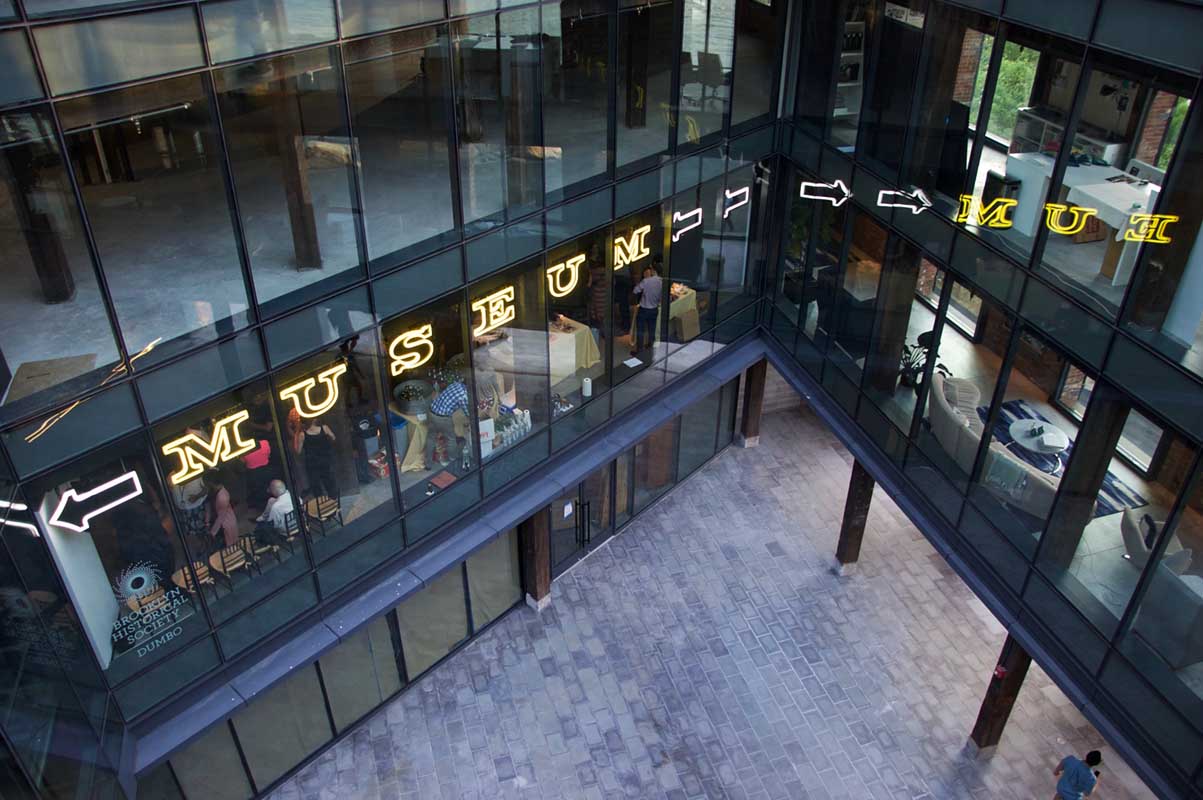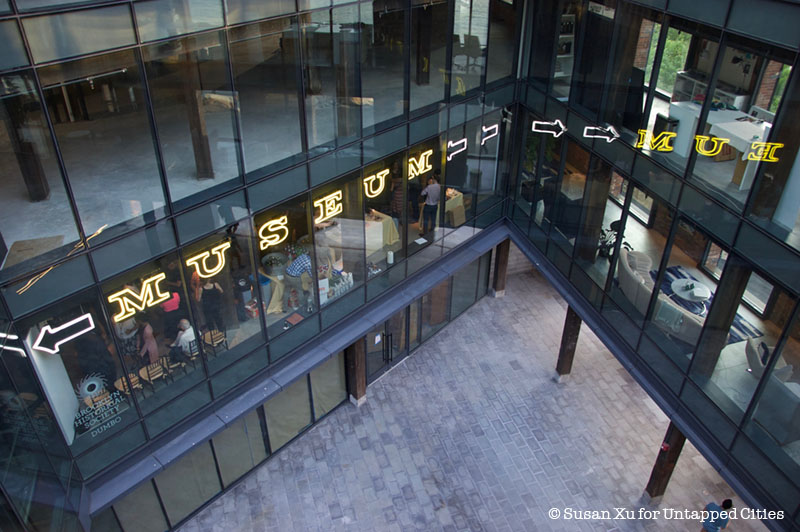
Brooklyn Bridge Park provides a scenic backdrop to Empire Stores, a forgotten 19th-century warehouse and former coffee storehouse turned into a 360,000-square-feet complex of restaurants, retail shops and offices. Last summer, we took a behind-the-scenes look at the construction site with Navid Maqami, the founder and principal architect at S9Architecture firm, which took over the redevelopment of Empire Stores in 2014.
Back then, the complex was still surrounded by a temporary fence, and a towering system of scaffolds had been erected, stories high, on-site. Yesterday, nearly one year later, we dropped by again for the launch of the Brooklyn Historical Society’s (BHS) satellite museum — the first expansion in the institution’s 154-year history, which officially opens to the public today, May 19th.
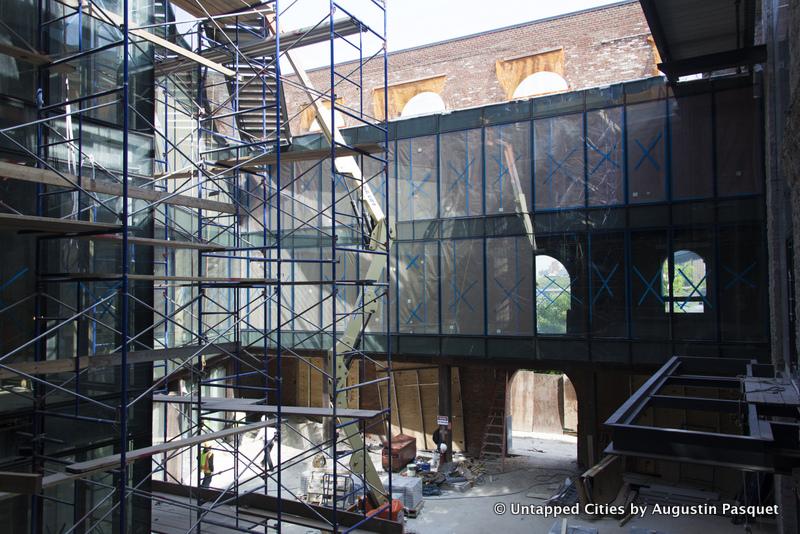 Inside the construction site of Empire Stores in 2016
Inside the construction site of Empire Stores in 2016
Its inaugural exhibition, Shifting Perspectives: Photographs of Brooklyn’s Waterfront, features the work of twenty-five photographers (many Brooklyn-based), including Chester Higgins, Jeff Chien-Hsing Liao, Berenice Abbott, Nathan Kensinger and more; altogether, 65 photographs are displayed throughout the 3,200-square-foot gallery, presenting a “survey of realistic documentation” of Brooklyn’s shoreline, in addition to coastal scenery from Jamaica Bay to Newtown Creek.
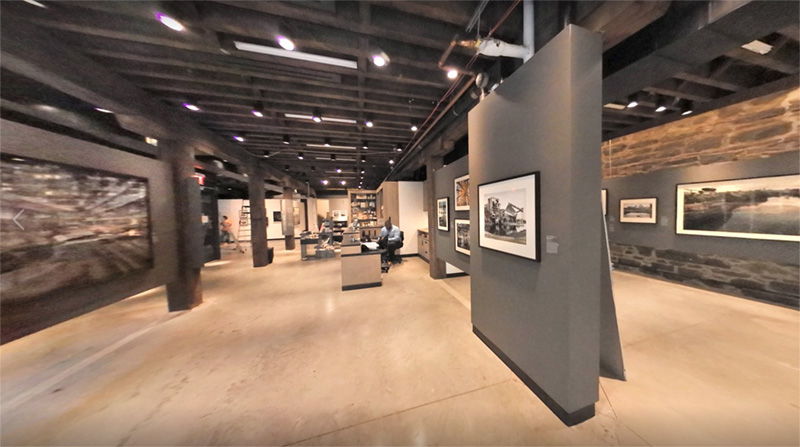 Inside the new Brooklyn Historical Society DUMBO location. Image via BHS
Inside the new Brooklyn Historical Society DUMBO location. Image via BHS
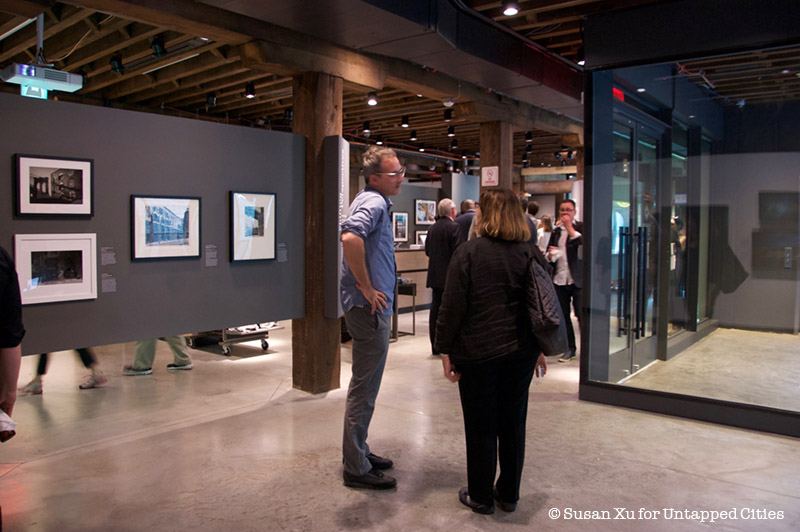
“Our aim is to link visitors to the water’s edge through inspired images created by some of the world’s great photographers,” said Brooklyn Historical Society President, Deborah Schwartz in a press release. “We hope and expect that when people leave the exhibition and walk out to the park, they’ll look at their surroundings differently…”
Given the rich history of the location, Shifting Perspectives: Photographs of Brooklyn’s Waterfront is suited as the inaugural show, which will be open to the public before a major, long-term exhibition is installed in December 2017. Entitled Waterfront, the forthcoming exhibit will tell the global and local history of Brooklyn’s waterfront through the stories of workers, artists, industries, families and more.
 Photographer Chester Higgins
Photographer Chester Higgins
In the short time that has passed since our initial visit, a lot has changed: gone are the scaffolds and construction rigs, which formerly occupied the spacious, open air atrium. Now fully renovated, Empire Stores is a difficult site to ignore given its 450-foot brick facade, fitted with newly-furnished metal doors. Once inside, the atrium gives away to concrete, metal and glass — modern additions that are incorporated with remnants of the once-forgotten warehouse, including its wooden beams and brick walls.
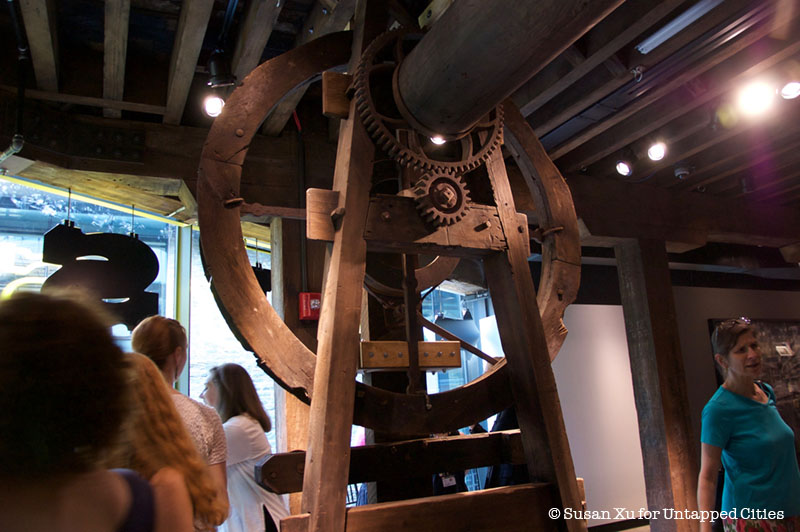 A giant winch sits inside the Brooklyn Historical Society’s gallery
A giant winch sits inside the Brooklyn Historical Society’s gallery
Like the rest of the complex, which features a retail space on the ground floor and offices in the stories above, Brooklyn Historical Society’s second, smaller location blends the old with the new. Sitting among the collection of photographs are artifacts from the waterfront’s industrial past, including a giant winch, which once hoisted tons of goods into and out of the warehouse; chalk and other markings on the gallery’s wooden, structural beams show examples of what Julie Golia, the Director of Public History at the BHS, describes as “crude mathematics” for the movement of goods. The scrawled numbers (seen below) date back to the 19th and 20th centuries.
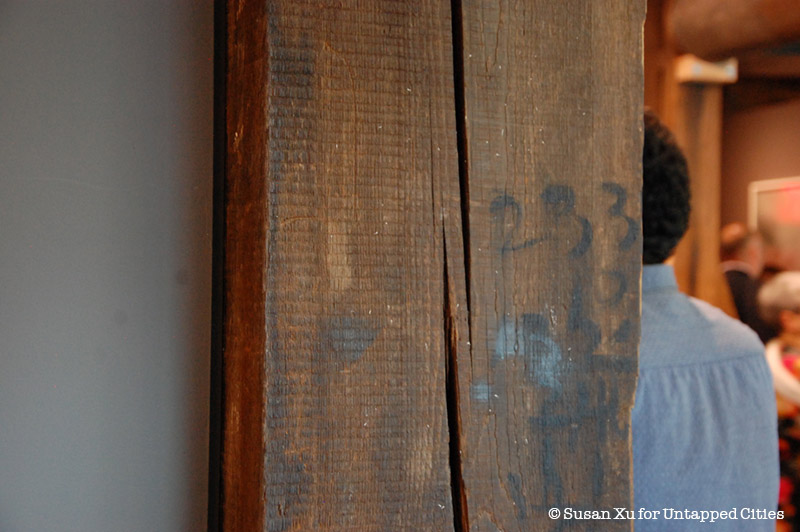
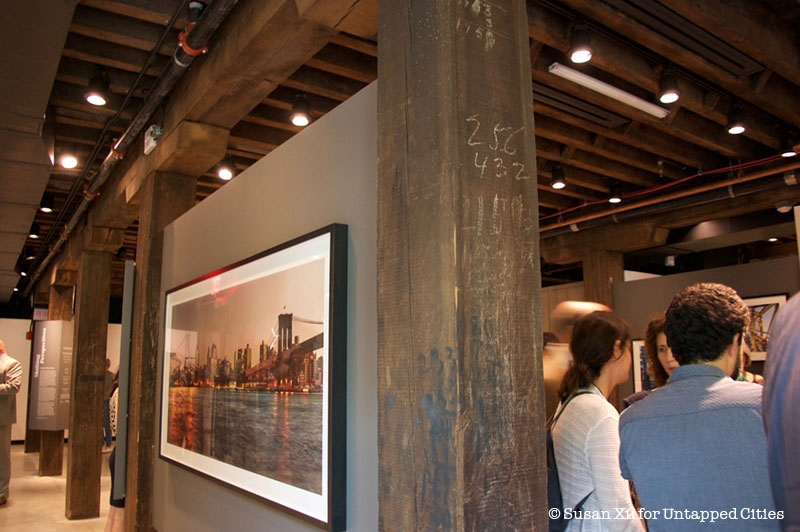 Markings dating back to the 19th century (top photo) and the 20th century (bottom photo)
Markings dating back to the 19th century (top photo) and the 20th century (bottom photo)
According to Golia, Empire Stores was originally a series of seven attached warehouses, built of schist walls and incorporating timber for its frame. Constructed in various phases between 1869 and 1885, the space — one of the last surviving storehouses in DUMBO — once held goods from around the world, including barrels and bags of rubber, wool, linseed oil, animal hides and coffee. Before its renovation, it had remained empty since it was sold in 1945 by Arbuckle Brothers Coffee.
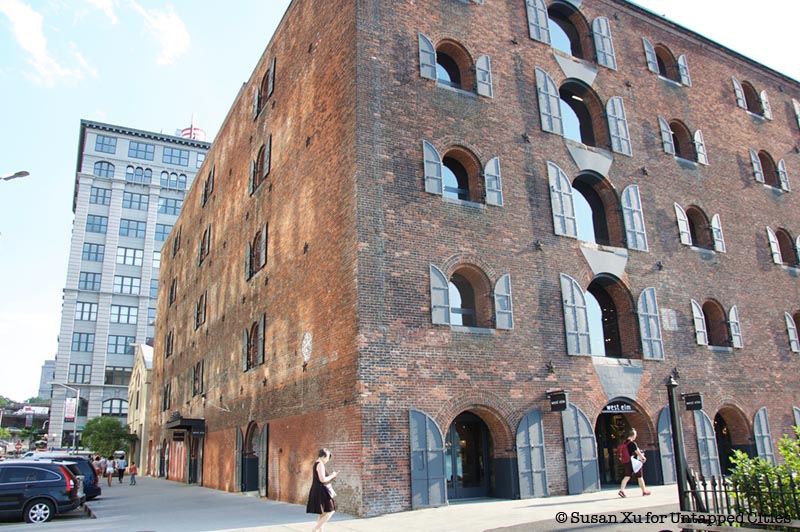
Now standing as “a symbol of Brooklyn’s deindustrialization,” Empire Stores offers plenty to do and several vantage points to see New York City’s iconic skyline through its open, arched windows. With BHS’s DUMBO location serving as the sole cultural institution inside, the complex thrives as a cultural hub and serves as an innovative example of adaptive reuse.
For more information on the Brooklyn Historical Society, visit the website here. The museum flagship is located on 128 Pierrepont St., in Brooklyn Heights, housed in a landmarked building designed by George Post, which opened in 1881.
Next, check out our Behind-the-Scenes look into the Construction of Empire Stores in Dumbo, Brooklyn and see more of our coverage of the Brooklyn Historical Society.






